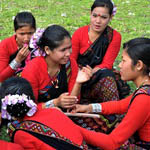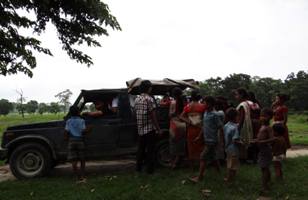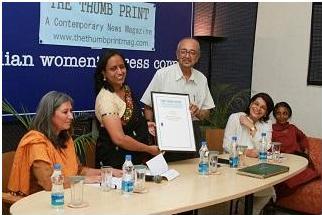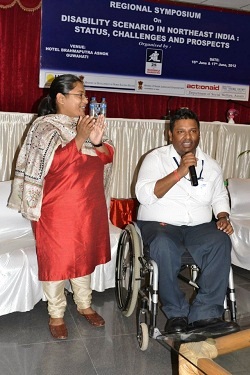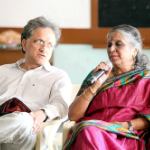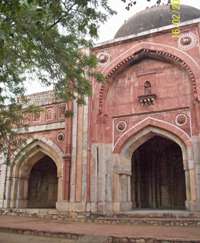'Mainland' India has suddenly become aware of the Northeast through the recent conflict in the Bodo area. It will confirm many in their view it is only a zone of conflicts. That has been the mainland view for decades. The mainstream media too takes note of the region only during the elections, conflicts and disasters. This conflict has given them one such occasion. However, the exodus of the North Easterners from Bangalore has been an occasion for many civil society leaders to sit back and establish new contacts with people of the Northeast in their city. They acted with alacrity to create confidence in them and restore faith in the city that they had chosen for education or jobs. Till the 1990s the Northeasterners went mainly to Delhi for education. Mumbai and Pune came next. Bangalore has been their major destination for over a decade both because jobs and because they, especially women felt safer there than in the remaining cities.
That changed with the fundamentalist forces spreading rumours about Muslims planning to attack the Assamese after Eid in retaliation for what they had done to their counterparts in Assam. Because they had felt safe in Bangalore, such a threat caused greater panic than it would have done in some other city. Panic gripped them because they were not prepared it in the city that they considered safe. That was the occasion for some civil society and religious leaders to ensure them that the city continues to remain human. Education and religious institutions opened their doors to shelter them. Muslim as well as other religious leaders organised iftar and eid functions to assure them that the city is safe for them. Civil society groups inquired into the alleged attacks, helped the victims to file FIRs and confirmed that these were false rumours.
Hats off for what they have done in an emergency. There are also indications that this will not be one more crisis during which they take emergency action and wait for the next explosion. One sees signs of soul searching among many of them. The believe that time has now come to go beyond relief to long-term measures for the integration of the Northeast with mainland India. Many of them also realise that the initiative has to come from the mainland that has for decades ignored the region. One saw this ignorance that Mary Kom from Assam had won a medal. In Bangalore, most of those who come under attack are not the Assamese who can melt in the crowd but the Mongoloids pay the price because they are different. There have been very few attacks not hundred as rumours go. Almost all of them have been on Mongoloid looking tribal, Nepali and Tibetan faces.
The civil society and leaders have realised from these instances that the reason for it is that "they are different" from the Aryan-Dravidian India that the mainland knows. That identity begins with the national anthem which stops at Bengal and does not even mention the Northeast. It mentions the Dravidians but not the Mongoloids who form a substantial section of its population. Ganga-Jamuna are its sacred rivers though the Brahmaputra that is longer than the Ganges and the fifth biggest in the world confers an identity on the region. One can give many more instances such as the banners of a public sector company that said "From Kashmir to Kolkata, India is One." After protests from the Northeast it was changed to "Kohima".
Because of this attitude many in the Northeast feel that India wants their treated all the struggles only as law and order issues and for five decades kept the region under the Armed Forces Special Powers Act that gives extraordinary powers to the armed forces such as empowering a junior commissioned officer to arrest a person on mere suspicion of planning a terrorist act. In case of death in custody, the person can be called a terrorist killed in an encounter, and the armed forces have immunity from prosecution. Little wonder then that it has led to so many human rights violations.
The people of the region are not innocent. They have committed many crimes. But the attitude of much of India has been that they do not belong to the "mainstream" and should join it. As Prof. M. N. Karna says, a mainstream assumes the Northeast is a subordinate "sub-stream" that has to merge with it on its terms, not according to the needs of the subordinate. An extreme form of this thinking was found in a leaflet circulated by a fundamentalist group in Delhi three years ago after attacks on women from the region. It said that the people of the Northeast do not know the Indian culture. Their women can be safe only if they learn to dress and behave like Indians. The Aryan-Dravidian culture is "Indian". What the Northeast has is foreign.
Integration requires a change of that attitude. It is based on respect for diversity and acceptance of the fact that the Northeast is different from the rest of India. One does not have to repeat that lack of understanding of diversity was the major cause of nationalist struggles beginning with that of the Nagas. Tribal communities of the region that had enjoyed an autonomous existence for centuries even under the colonial regime were not allowed to retain their identity. For example, the Angami tribe to which Z. A Phizo the Naga nationalist leader belonged had resisted the British from the beginning and had to be put down through a conquest. Phizo himself was jailed for his opposition to them. He led the resistance to the Japanese invaders and expected the leaders of independent India to respect that autonomy and identity. But a single centralised administration was imposed on the tribes that wanted to preserve their identity. That is where the Naga struggle began.
Also the immigration issue is a result of ignoring local needs. From 1891 the British rulers encouraged East Bengal peasants to come to western Assam to cultivate what they called wasteland. It was in fact the community land of the Bodo and Rabha tribes. With it began the Bodo-Bengali peasant conflict around land. Since most East Bengal zamindars were Hindu and peasants were predominantly Muslim, 90 percent of the immigrants were Muslim. That gave a communal angle to immigration. As more immigrants came, some leaders of the Indian freedom struggle feared that Assam would become a Muslim majority province. So they encouraged Bihari Hindus to migrate to the State. That added a second communal dimension to the immigration issue. Because migration from East Pakistan continued after the Partition, the communal forces added a "nationalist" angle to communalism. These issues are used for electoral politics and ignore the people.
The civil society groups in Bangalore realised that the communal forces used the same approach to frighten people from the Northeast into leaving Bangalore. They conclude from these events that people from mainland India should take the first step for their integration which is many communities coming together while retaining their identity, culture and autonomy. They also feel that the dominant approach in India has been towards merger which involves joining the "mainstream" by abandoning one's identity. This change of heart has to be encouraged and an atmosphere of respect for diversity has to develop. They also realise that the Northeasterners who come to Bangalore for education or jobs tend to live by themselves without much contact with the local population. The local people need to learn more about them. They on their part should be encouraged to mix with the rest. There are two to three lakh of them in the city and can make a difference to its cultural life.
Some civil society groups have taken important steps in that direction. One group, for example, realised that the Tibetan hostel in their area was an island. As soon as the crisis began they visited it and tried to understand their situation. Others did the same with the Nepali and Sikkim population and the Seven Sisters. These steps have to be continued. Cultural shows, sale of their handicrafts and talks about them can go a long way towards a better understanding. All of it requires an attitude of respect for ethnic, cultural and religious diversity and a move away from fundamentalism towards a composite Indian culture.

